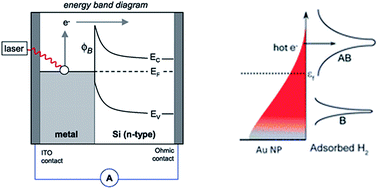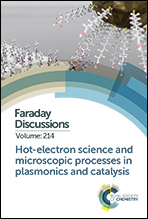Spiers Memorial Lecture
Introductory lecture: Hot-electron science and microscopic processes in plasmonics and catalysis
Abstract
In these introductory remarks we discuss the generation of nonequilibrium electrons in metals, their properties, and how they can be utilized in two emerging applications: for extending the capabilities of photodetection, and for photocatalysis, lowering the barriers of chemical reactions. Because direct illumination of noble/coinage metal nanoparticles results in the excitation of their localized surface plasmons, these nanostructures can serve as active optical antennas, central to the goal of efficient hot electron generation to drive these processes. Currently, noble/coinage metal nanoparticles are being supplemented by earth-abundant, sustainable alternatives. Herein, we discuss how active optical antennas can expand the wavelength accessibility and alter the properties of traditional photoconductive detectors in new ways. We also examine how active optical antennas, when combined with conventional catalytic nanoparticles in an integrated manner, can convert catalysts into photocatalysts to change chemical product specificities and even alter chemical reaction pathways.

- This article is part of the themed collections: The Spiers Memorial Lectures and Hot-electron science and microscopic processes in plasmonics and catalysis

 Please wait while we load your content...
Please wait while we load your content...
